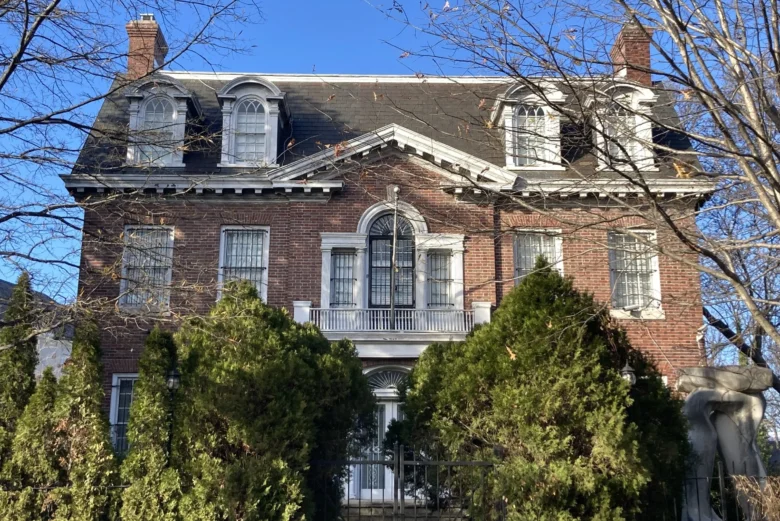At the corner of 23rd and Wyoming street in Kalorama, surrounded by embassies, ambassadors’ residences and private homes, one stately mansion is not quite like the others.
Even from the street, it’s evident the house has a sort of stillness to it. The blinds are drawn at midday on some windows; others windows are bricked over entirely. The landscaping has been reclaimed by the wild, creeping over a gate that seems more rusted shut than locked, snaking over the life-sized sculpture adorning the front lawn.
Were this any other vacant house in one of Washington’s most prestigious zip codes, a discreet realtor’s sign might have sat off to one side, although not for long during the early days of a new presidential administration. But there are other, more telling signs; a plaque next to the door, its letters scratched off. An empty flagpole protruding from a once-elegant Juliet balcony, now sealed shut for so long that its doors have become little more than ghosts of an exit, framed in iron and memory.
Walking by, you’d never know that a U.S. president died here. And a Chief Justice of the Supreme Court. Or that the building itself became a matter of a diplomatic dispute when two countries merged, then separated a short time later. You probably wouldn’t be able to guess just by looking at what was once an embassy, that its diplomats were expelled when the U.S. severed ties.
You might not know that a decade after it was abandoned, it might soon have new life.
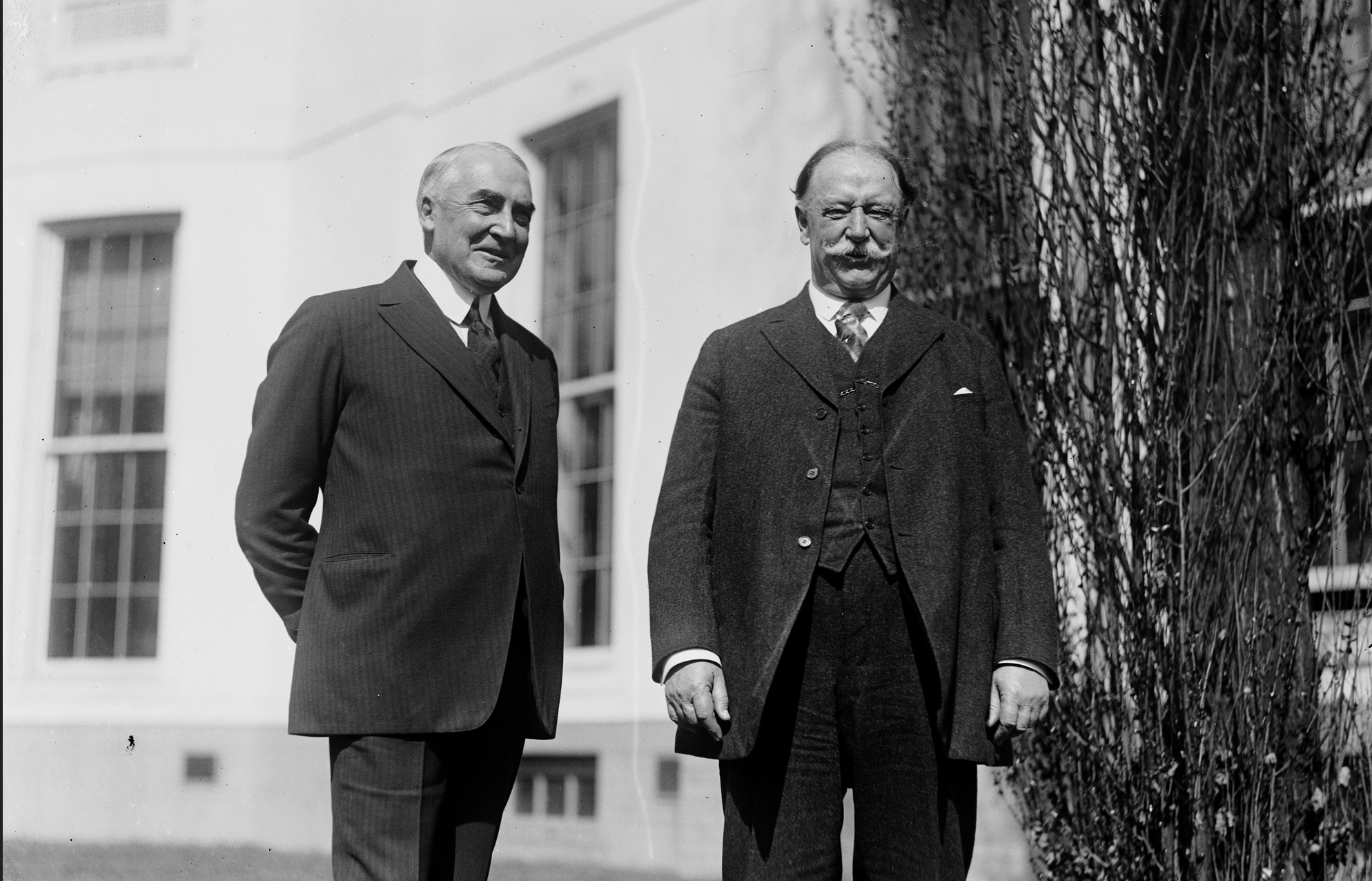
In 1921, William Howard Taft and his wife, Helen Louise “Nellie” Herron Taft, purchased the stately Georgian Revival home at 2215 Wyoming Avenue NW for $75,000. This marked a new chapter for the former president, who had lost his bid for re-election several years earlier. But in the same year, Taft realized a long-held ambition when he was appointed Chief Justice of the United States, becoming the only person in history to serve both as president and as the head of the nation’s highest court.
President Harding, who appointed Taft to the Chief Justice position, was intimately familiar with the area. He had also lived in the Sheridan Kalorama neighborhood, with his former home just across the way, at 2314 Wyoming. It was in that house that Harding penned steamy love letters to his mistress, and drafted his inauguration address. (Serving now as the residence of the Ambassador of Monaco, it was featured in our profile, You Can’t Sell Sentiment in Washington.) Harding and Taft are among the six U.S. presidents who at one point made Sheridan-Kalomara their home.
When Taft died in the residence on March 8, 1930, he became the first U.S. president to be buried in Arlington National Cemetery, a distinction later shared by John F. Kennedy. Nellie remained in the home until her death in 1943.
A short time later, 2215 Wyoming Avenue became the home of the newly-recognized Syrian legation.
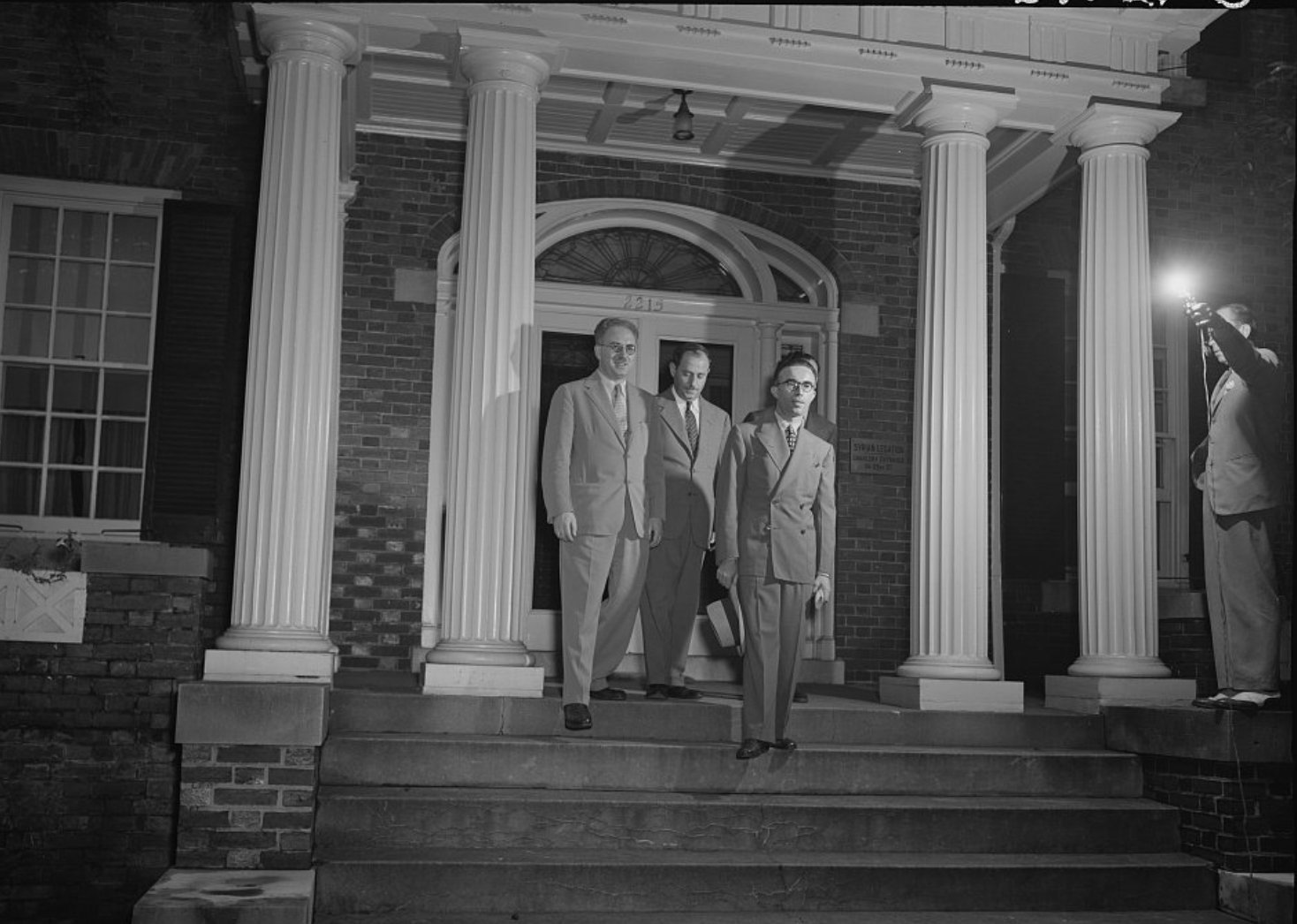
The United States established diplomatic relations with Syria in 1944, recognizing its independence from French mandate control. On July 5, 1945, guests attended “the opening of the Syrian Legation in the presence of His Excellency Faris Bey al-Khouri, Prime Minister of Syria,” who had recently returned from the San Francisco conference for the signing of the United Nations charter.
“The Syrian legation is housed in the home of the late President and Mrs. Taft, a pleasant house on Wyoming Avenue,” a Washington Post reporter noted. “There’s little semblance remaining of the days when Mr. Taft, later Chief Justice, lived there.”
In 1958, Syria merged with Egypt to form the United Arab Republic (UAR), an ambitious experiment in Arab unity under President Gamal Abdel Nasser. Washington viewed the union with caution, monitoring how it might shift the regional balance of power, particularly regarding Soviet influence. The arrangement, however, was short-lived. By 1961, Syria, seeking greater autonomy, withdrew from the union and reestablished itself as an independent state.
The dissolution of the UAR presented diplomatic and logistical challenges, particularly regarding control of embassy properties in Washington, D.C. During the union, Syria’s former embassy at 2215 Wyoming Avenue NW had been incorporated into the UAR’s diplomatic mission. When Syria regained its independence, it sought to reestablish its diplomatic presence, leading to negotiations over the return of the property. While Egypt, as the successor state to the UAR, initially retained control over many of the union’s assets, the resolution in Washington ultimately restored the Wyoming Avenue building to Syrian ownership. Although the process reflected the complexities of unwinding a political merger, both nations moved forward diplomatically.
The United States recognized Syria’s independence on October 10, 1961. This recognition led to the reestablishment of separate diplomatic missions: the Syrian Embassy and the Egyptian Embassy in Washington, D.C., each representing their respective nations. It also elevated the status of the Syrian legation and the US legation in Damascus to embassies.
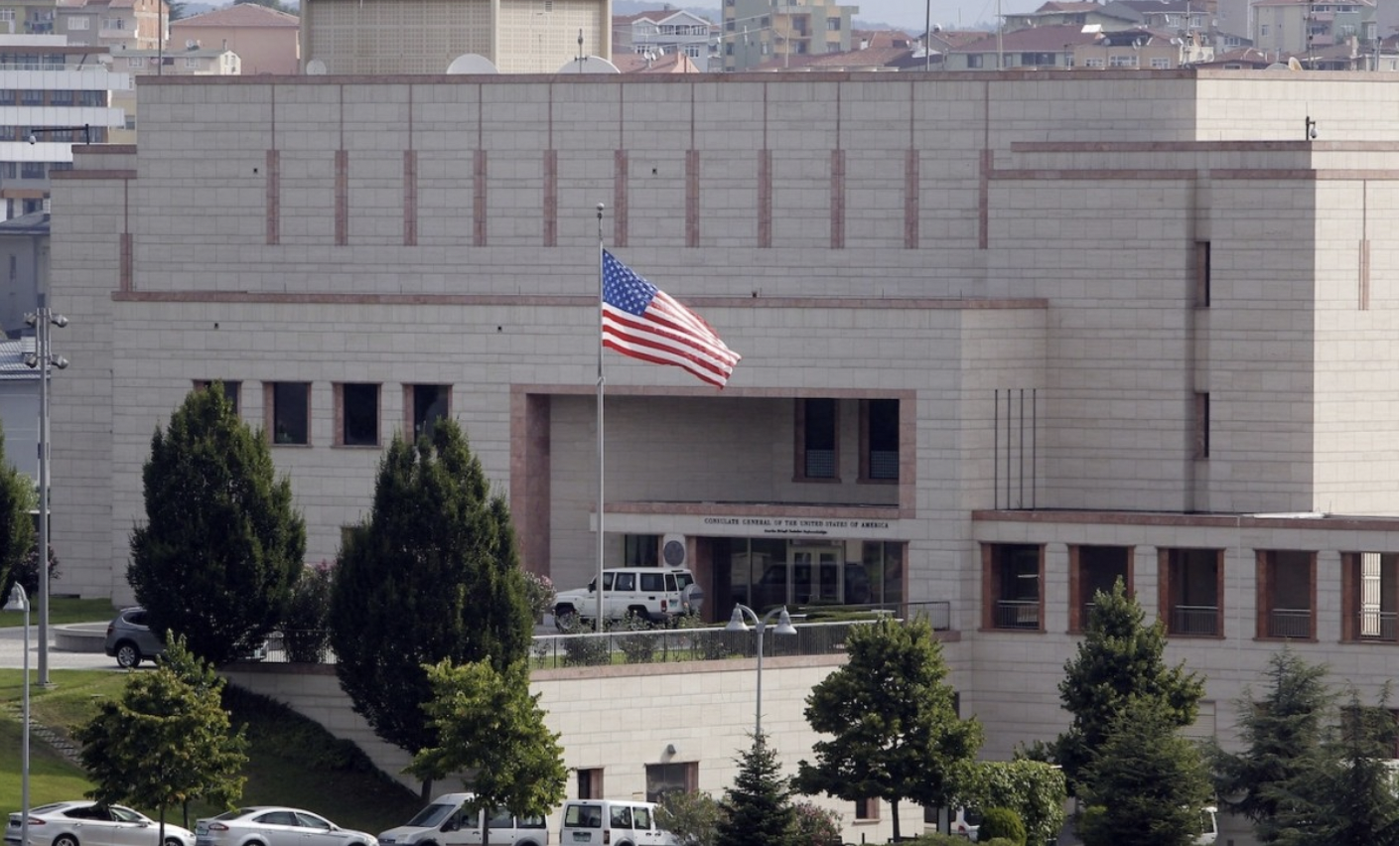
From 1963 to 1990, Syria’s political alignment shifted dramatically following the Ba’ath Party’s rise to power through a military coup. Embracing socialist and Arab nationalist principles, Syria deepened its relationship with the Soviet Union, creating persistent friction with the United States. In 1979, the U.S. designated Syria as a state sponsor of terrorism due to its support for Hezbollah and various Palestinian factions. Despite these hostilities, Syria and the U.S. found moments of strategic alignment, most notably when Syria joined the U.S.-led coalition in 1990 against Iraq’s invasion of Kuwait.
Relations further deteriorated in the 2000s, with Syria facing U.S. accusations of destabilizing Lebanon and supporting militant groups. The 2003 Syria Accountability and Lebanese Sovereignty Restoration Act imposed economic sanctions, demanding an end to Syria’s alleged sponsorship of terrorism. The situation escalated in 2005 following the assassination of Lebanese Prime Minister Rafik Hariri, widely blamed on Syria, prompting the U.S. to recall its ambassador from Damascus. In 2006, three assailants were killed in Damascus in a thwarted car-bomb attack at the U.S. embassy.
By 2012, as the Syrian Civil War intensified, the U.S. formally severed diplomatic ties, suspending its embassy operations in Damascus and closing the Syrian embassy in Washington, D.C. In 2014, the U.S. escalated its stance by expelling Syria’s remaining diplomats and suspending all consular services, effectively freezing official bilateral relations.
The rupture deepened as the U.S. imposed additional sanctions and worked to isolate the Assad government internationally. That same year, the abduction of American journalist Austin Tice near Damascus further strained relations. His fate remains uncertain, though the fall of Assad’s regime in December 2024 has led to renewed efforts to determine his whereabouts. With Syria now under transitional leadership, discussions about reestablishing a U.S. diplomatic presence are emerging, though Washington remains cautious in its engagement. If successful, the building, which is still owned by the Syrian government, would be an embassy once again.
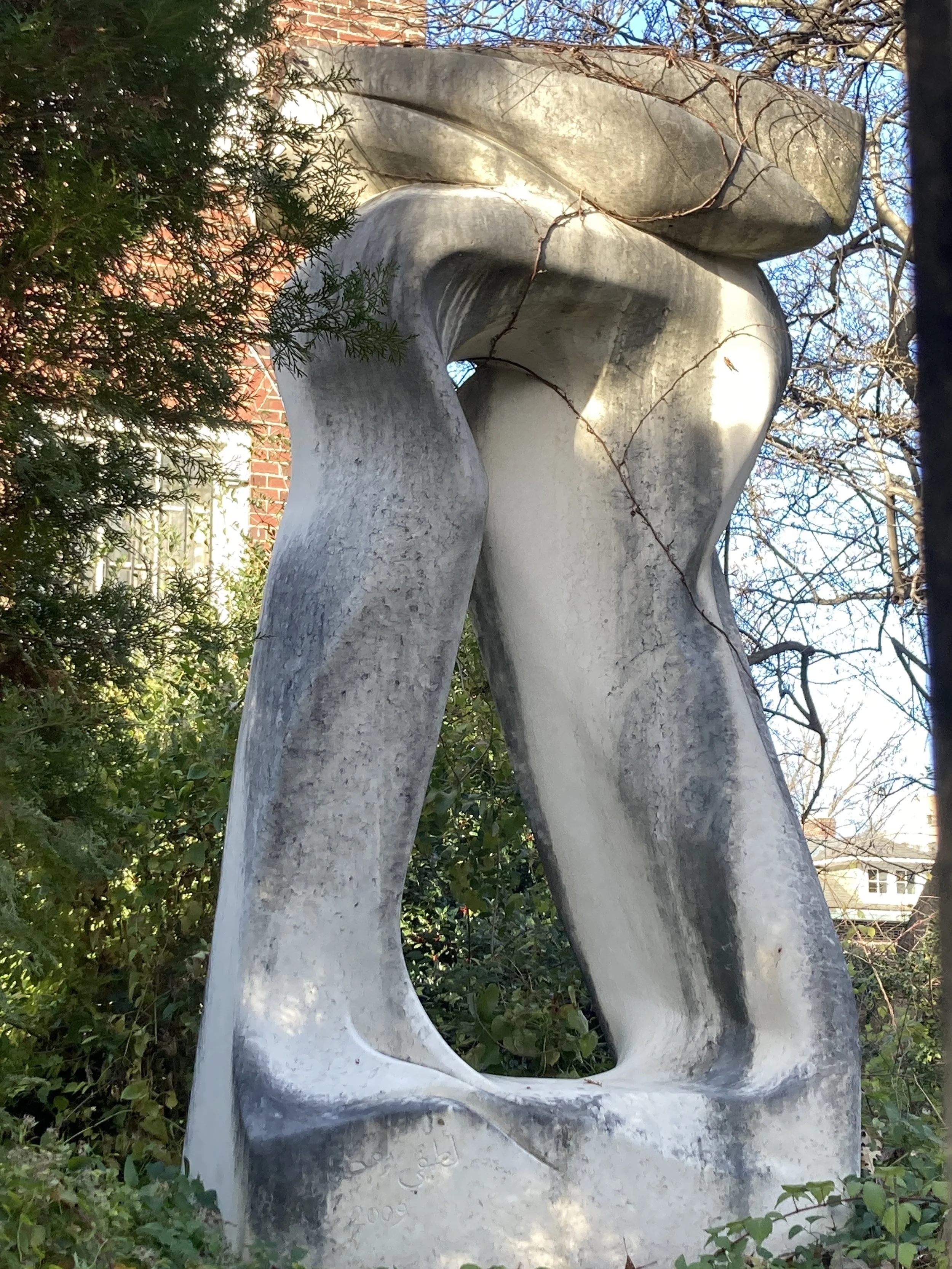
More than one embassy in Washington is rumored to be haunted by its former owners. The Embassies of Indonesia, Latvia, and others have mostly made peace with their ghosts. But there is something particularly indelible about a building that experiences not just the loss of an individual, or in this case, two, but the loss of a country.
It’s one thing for a house to be haunted by the ghosts of its former owners—echoes of footsteps on old hardwood, the weight of history settled into its walls. But when a country leaves Washington, the emptiness is something else entirely. It’s not just the absence of people; it’s the silence of a severed relationship, a void where diplomacy once stood. The locked doors and bricked-over windows don’t just conceal the past—they mark the point where a nation’s voice faded from the conversation, leaving only the shell of its presence behind.
With sincerest appreciation to the staff at the William Howard Taft National Historical Site in Ohio who provided fact-checking and verification for key dates.
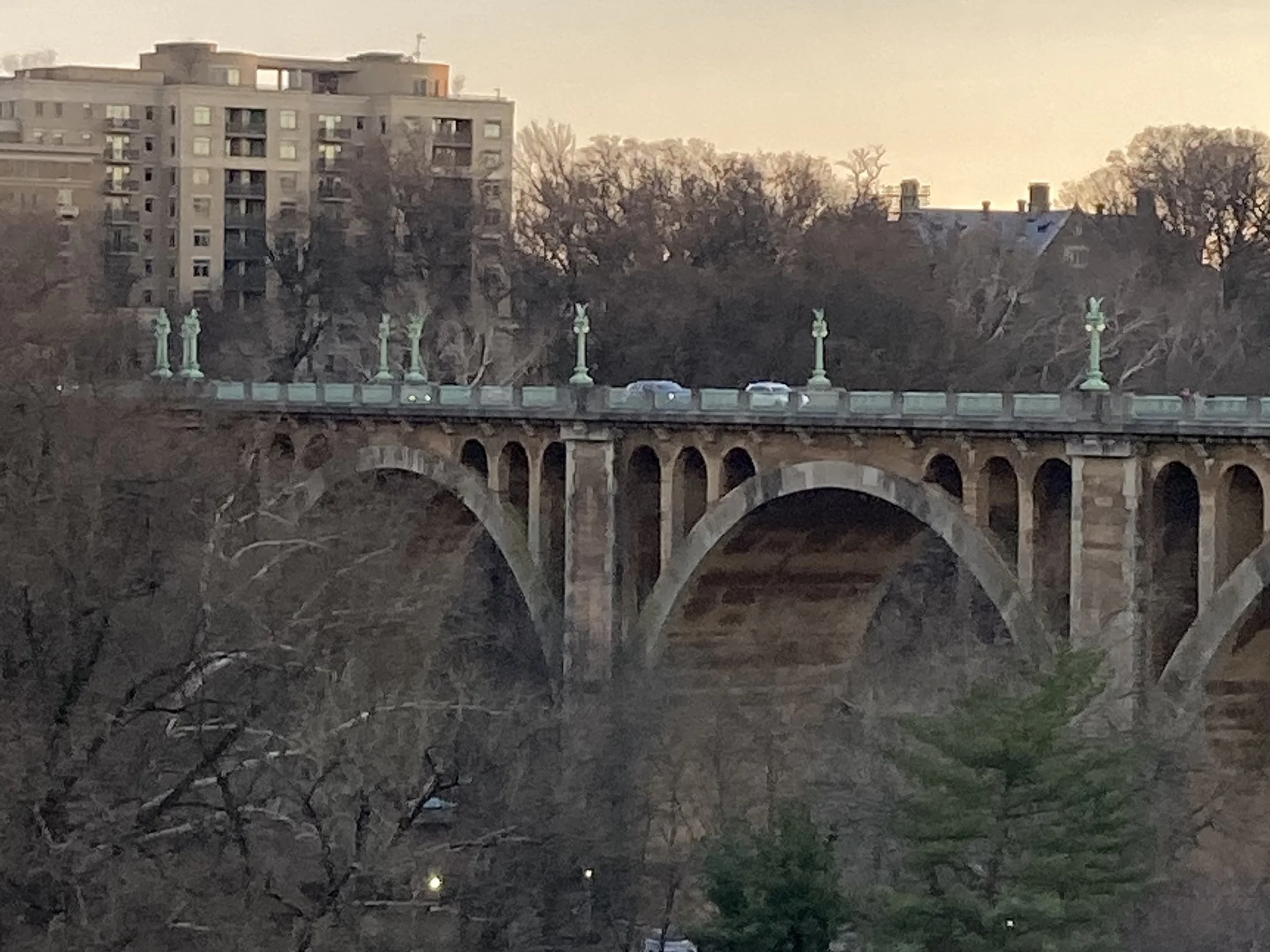
Did You Know?
While living in the Kalorama home, Taft became fond of walking the nearby Connecticut Avenue Bridge. Completed in 1907, the bridge still connects the Kalorama and Woodley Park neighborhoods, and offers views to Rock Creek National Park below. Adorned with four distinctive lion sculptures, and twenty-six Bairstow lamps, the world’s largest unreinforced concrete structure is an architectural landmark, designed in the Beaux-Arts style. In 1931, the bridge was renamed the Taft Bridge.
